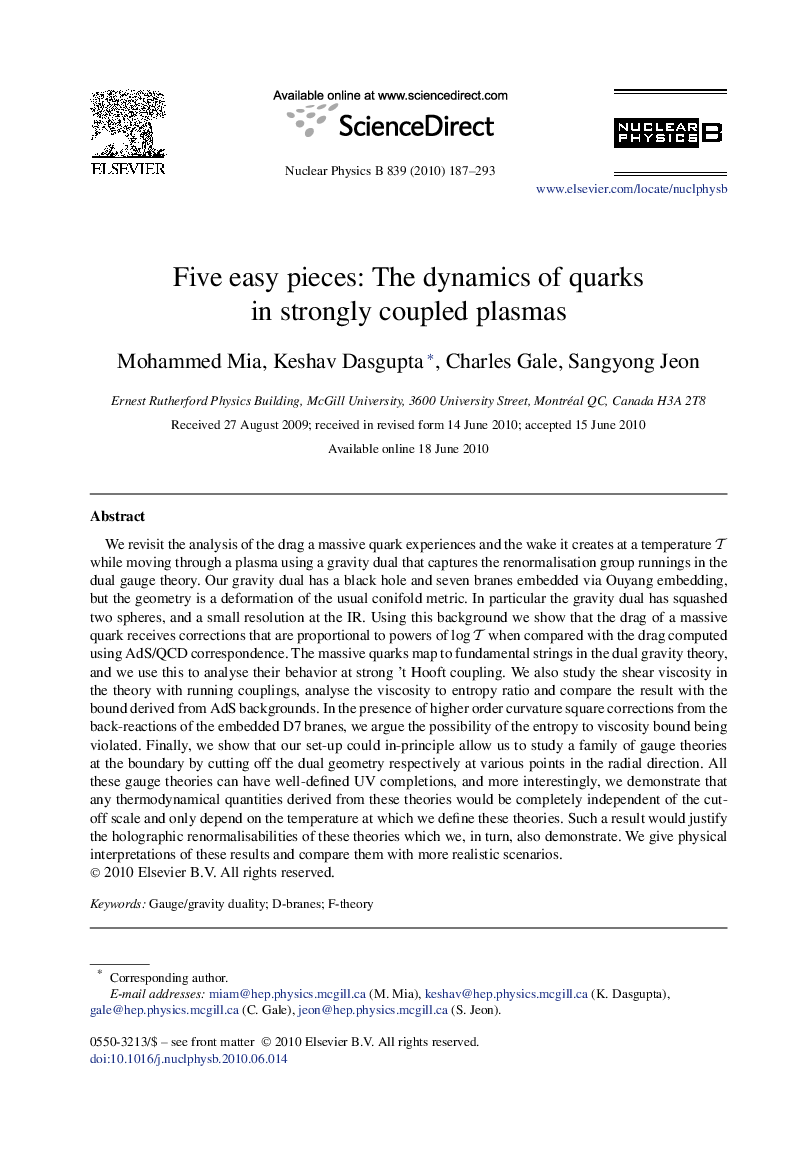| Article ID | Journal | Published Year | Pages | File Type |
|---|---|---|---|---|
| 1843903 | Nuclear Physics B | 2010 | 107 Pages |
Abstract
We revisit the analysis of the drag a massive quark experiences and the wake it creates at a temperature T while moving through a plasma using a gravity dual that captures the renormalisation group runnings in the dual gauge theory. Our gravity dual has a black hole and seven branes embedded via Ouyang embedding, but the geometry is a deformation of the usual conifold metric. In particular the gravity dual has squashed two spheres, and a small resolution at the IR. Using this background we show that the drag of a massive quark receives corrections that are proportional to powers of logT when compared with the drag computed using AdS/QCD correspondence. The massive quarks map to fundamental strings in the dual gravity theory, and we use this to analyse their behavior at strong 't Hooft coupling. We also study the shear viscosity in the theory with running couplings, analyse the viscosity to entropy ratio and compare the result with the bound derived from AdS backgrounds. In the presence of higher order curvature square corrections from the back-reactions of the embedded D7 branes, we argue the possibility of the entropy to viscosity bound being violated. Finally, we show that our set-up could in-principle allow us to study a family of gauge theories at the boundary by cutting off the dual geometry respectively at various points in the radial direction. All these gauge theories can have well-defined UV completions, and more interestingly, we demonstrate that any thermodynamical quantities derived from these theories would be completely independent of the cut-off scale and only depend on the temperature at which we define these theories. Such a result would justify the holographic renormalisabilities of these theories which we, in turn, also demonstrate. We give physical interpretations of these results and compare them with more realistic scenarios.
Related Topics
Physical Sciences and Engineering
Mathematics
Mathematical Physics
Authors
Mohammed Mia, Keshav Dasgupta, Charles Gale, Sangyong Jeon,
